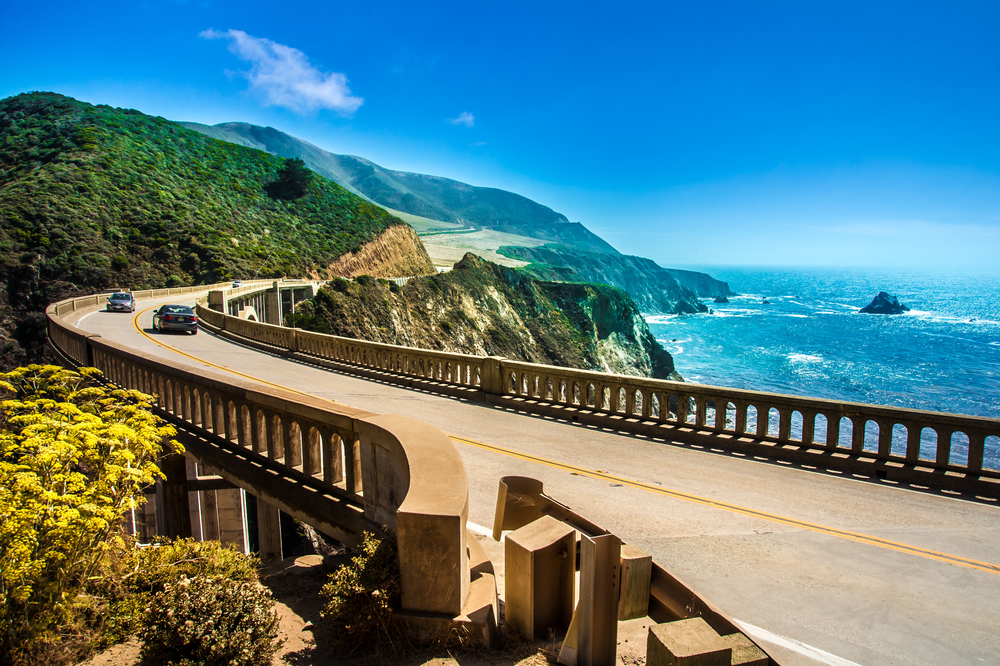I like to brag that I’m an expert road-tripper. I have visited all but five states in the U.S. by car and have driven across the country three times since I graduated from college. I can’t say that all of those trips have gone smoothly. In fact, one time I had to junk a car in Utah after driving through the Tetons (more on that later). But by making a lot of mistakes and jeopardizing my safety at times, I have learned what not to do (hence my “expert” status).

Michael Urmann / Shutterstock.com
My friends are sick of hearing my stories and advice, so I’m excited to have a new audience. All of you who are planning a trip this summer, listen up! Take the following steps before you leave to increase your chances of having a safe, successful road-trip:
- Bring your car to a mechanic you trust. First things first. In order to have a successful road-trip, you must have a working car. Tell your mechanic how far you plan to go and where. The weather and elevation you will encounter might affect the mechanic’s assessment of your car’s needs. After an evaluation, they will let you know what they recommend fixing or replacing in order to prevent catastrophe. Listen to them! Definitely purchase new tires and brake pads if they think you should. A long road-trip can wear down the tread on your tires, making them more susceptible to blowouts. Descending through the mountains can put stress on your breaks, and you will absolutely need them to be functioning.
- Make sure you have a spare tire. Remember when I recommended replacing your tires? Yeah, I didn’t do that before I drove from Louisville, Kentucky, to Los Angeles, California, in the summer of 2012, and my tire blew out in Missouri. Luckily, no one was around me on the road, and I was able to steer the car to the emergency lane. I did have a spare tire, thankfully, but I didn’t have the tools to change it myself. Which brings me to my next point...
- Make sure you have tools and your car manual so you can change a tire. Practice before you leave with help from someone who has done it before. Even if you try, sometimes you cannot prevent a flat or blowout on the road, but at least you’ll be armed with the knowledge to get you out of a messy situation.
- Get a AAA membership. When all else fails, AAA will come to the rescue! Roadside assistance saved my butt on numerous occasions. They put on my spare in Missouri, and they towed me to a mechanic when my car broke down in Salt Lake City. I’ve also called them to replace my car battery, and I know they will open your car if you’ve locked your keys inside. However, it should be noted that AAA limits you to four service calls within a given year and that each membership level has different towing benefits. According to the website, basic level members will receive the first three miles of towing for free but will be charged $4.00 for every additional mile. Plus level members receive the first 100 miles for free, and premiere level members receive the first 200 miles for free. Before you settle on the basic level membership, consider where you will be driving and the likelihood of a service station being within a three-mile radius of you at any given moment.
- Pack jumper cables. Sometimes you accidently leave a light on in your car overnight; it happens often when you’re camping and going to and from the vehicle to retrieve your stuff. Keep jumper cables in the trunk so you can enliven a dead battery without calling AAA. (Let’s save them for the serious stuff.)
- Don’t overpack. This is hard when you’re moving or going on a weeklong camping trip. I should know. I have moved myself across the country twice, but I shipped most of my stuff the second time around. Why? The first time I loaded my car to the brim and stuck a cartop carrier on the roof. The result? My Volvo slowly crept up the mountains at 40 mph and rocketed down them at 70+ mph. Gravity was not my friend. The uphill climbs were too much on my engine and the downhill descents felt treacherous. For an older car, the weight and the mountains was enough to exacerbate car maintenance issues that had previously been minor and stable. While navigating the Tetons, my Volvo began to overheat.
- Load up on water. Water is good for you and it’s good for your car. If you happen to get stranded on the road, you’ll need to stay hydrated. If your car begins to overheat, you’ll need to cool it down. Without a proper coolant mix at hand, you can put water in the reservoir for a temporary fix. It will get you up and running so you can make it to a mechanic.
- Choose a realistic route. I often wonder if I had chosen to take the southern route with my Volvo instead of the mountainous northern route, would I have arrived in Los Angeles with a working car? My sister, who had lived in the mountains for years and knew the strain they had put on her car, encouraged me to go south through Oklahoma instead of north through Wyoming, but I didn’t listen. I wanted to see the sights! Later, I discovered the beauty of the southwestern states I had dismissed before. So my advice? Be realistic about your vehicle and choose a route accordingly. No matter where you go, you’ll see something spectacular. I also recommend thinking about your route in terms of isolation. How spread apart are towns and cities? Will you be able to find help if necessary? Are you going into areas where people may not treat you with respect? If any of these questions makes you feel slightly anxious, choose a different route.

g-stockstudio / Shutterstock.com
- Buy an atlas. I know that most of us rely on Google Maps to get everywhere, but it’s likely you will not have 3G or LTE service in remote areas of the U.S. An atlas will give you all the information you need to stay on track. Some also tell you where campsites are located!
- Choose a buddy (or two). When my tire blew out in Missouri and my car overheated in the Tetons, my best friend, Eric, was by my side to help me troubleshoot. Later, he reminded me to breathe and gave me a massive hug after we broke down on the side of the road in Salt Lake City and found out that my Volvo was unsalvageable. After we junked the car, he walked with me down the side of a highway (not recommended) to a Budget Car Rental where we got a Chevy Malibu to take us the rest of the way to Los Angeles. I don’t think I would have made it there without him. My point? Pick someone to accompany you on your trip who will have your back if things go south. Pick someone who enjoys the same music as you and is a good conversationalist. Your driving buddy can make or break your trip. On paper, the Kentucky to Los Angeles road-trip of 2012 looks like a nightmare. In reality, it was one of the best experiences of my life. All of the stuff we experienced brought Eric and me closer, and five year later, we are happily dating and living together in New York City.
This article is not meant to scare you. It’s here to remind you that life is unpredictable, and you should be prepared if you experience a nasty bump in the road (get it?). The biggest takeaway is this: be realistic about the state of your vehicle. If it’s had any problems, a road-trip is likely to make them worse. Fix what needs to be fixed and stock up on supplies to alleviate problems should they arise. Then, have a great time! Good luck and stay safe out there, future road-trip experts!
-
How to Find a Cheap Plane Ticket for Study Abroad
-
How to Maximize Your European Vacation
-
10 Lesser-Known National Parks to Visit this Summer
-
How to Make the Most out of an Immersion Course Abroad
-
10 Spring Break Safety Tips
-
Nine Tips to Help You Make the Most of Your Summer Travel
-
The Most Popular Locations to Study Abroad
-
Studying Abroad Alone as an Introvert: Making Friends in a New Country
-
Dressing Respectfully While Traveling Abroad
-
Cómo aprovechar un viaje corto para mejorar un idioma
-
Seeing the World on a Shoestring Budget
-
Eight Little-Known Facts about Study Abroad Programs


